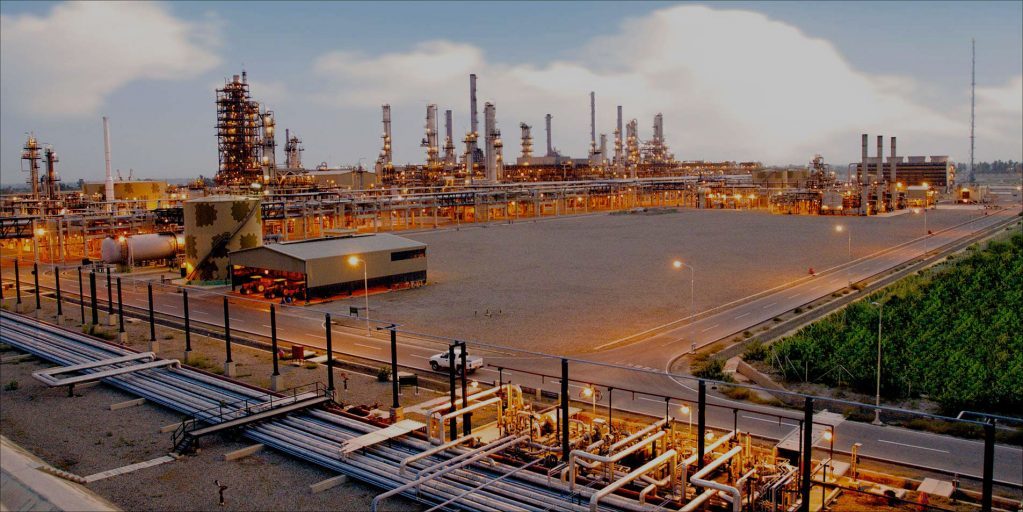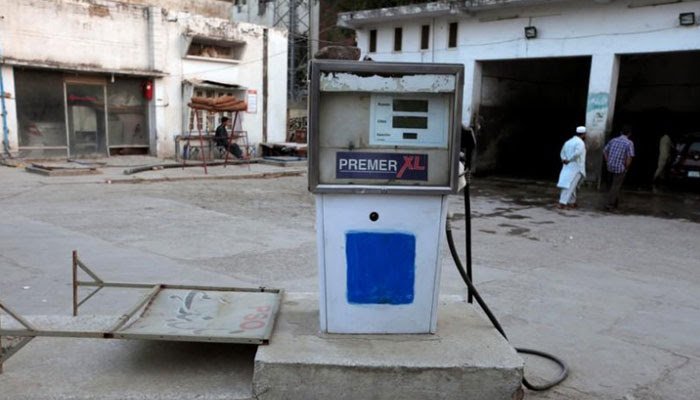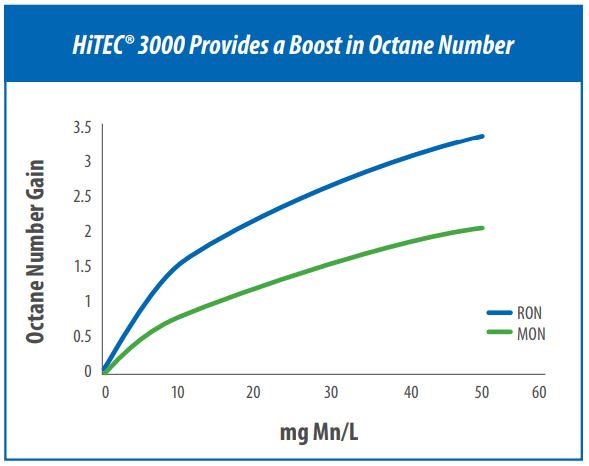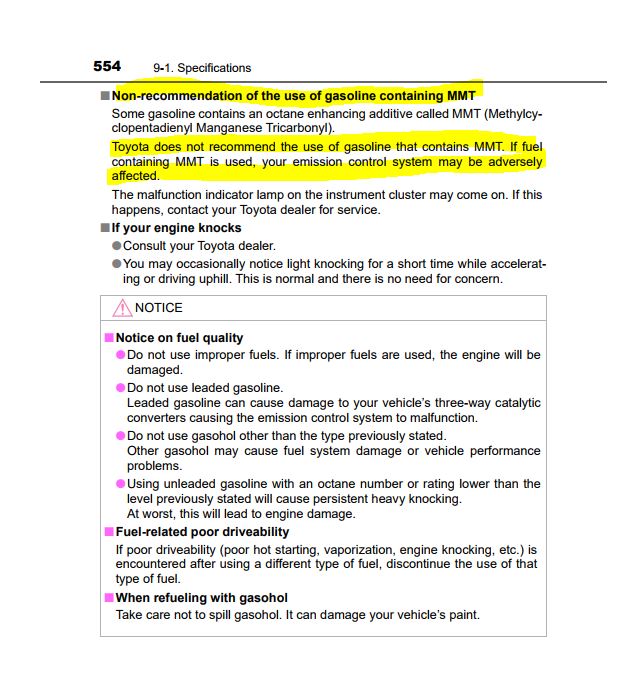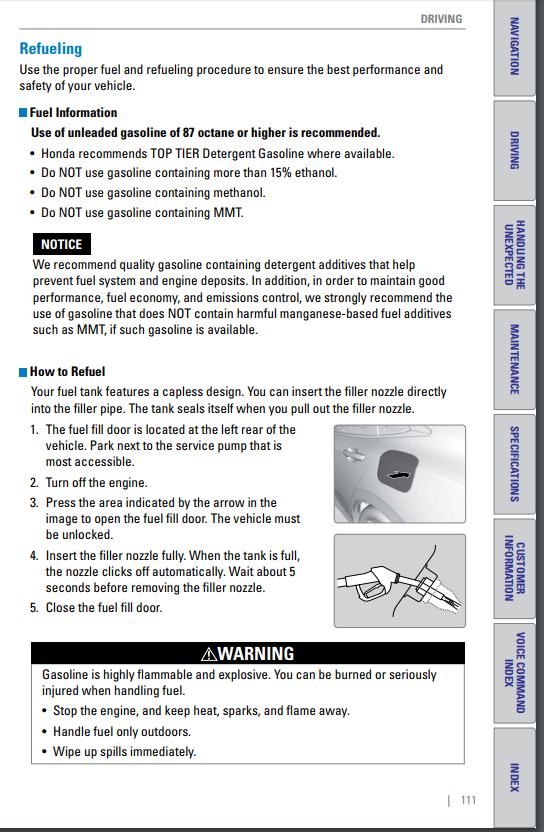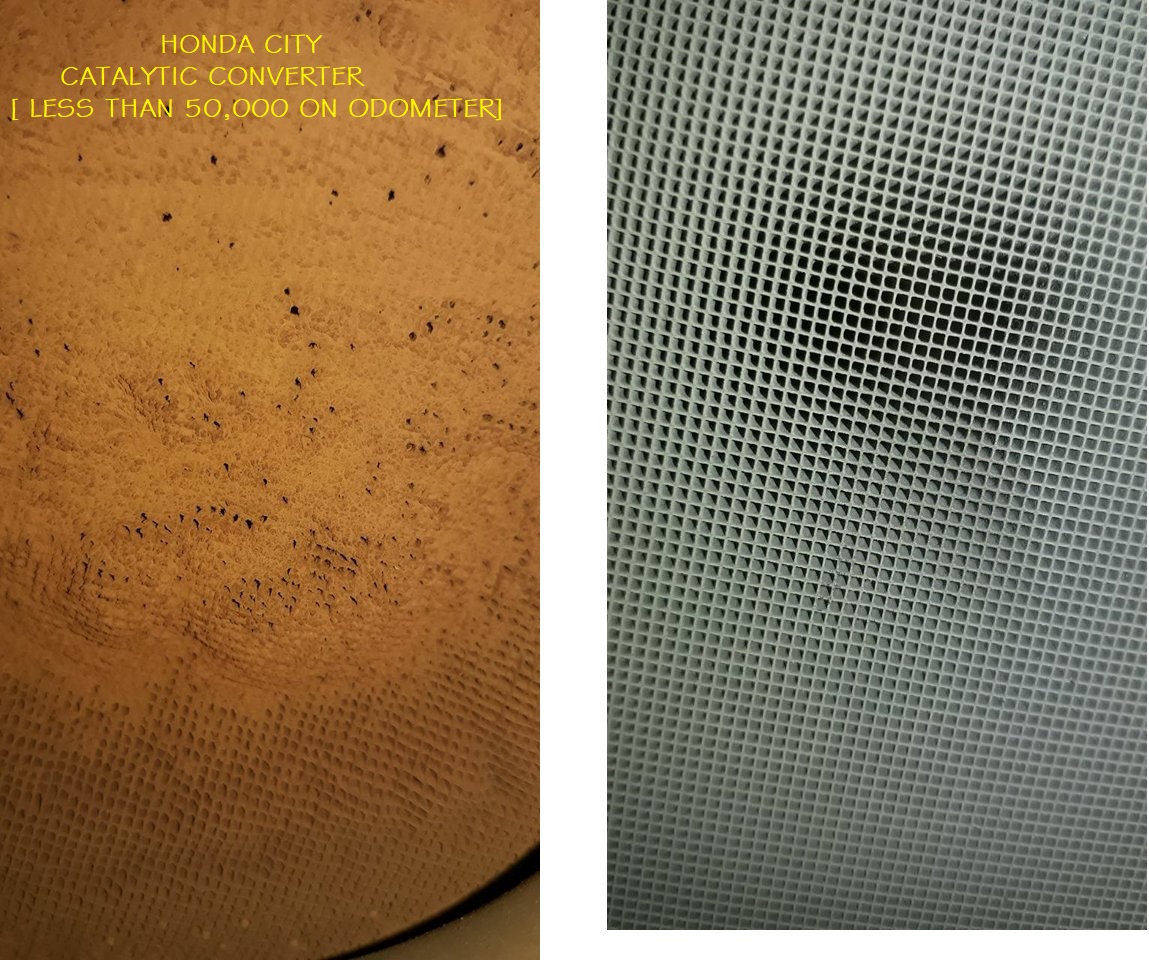Truth Behind Controversial Petrol Additive Manganese “MMT”, Oil Companies Threaten Honda Atlas!
Fuel is one of the most important items needed for a smooth flow of daily life. Every other industry, business as well as an individual require it one way or another. Unfortunately in Pakistan gasoline has always been a news item, sometimes due to high prices, sometimes unavailability and most of the times inappropriate and fraudulent activity at the pumping stations. Mixing of kerosene with petrol by pump owners is not a surprise as well as mixing smuggled petrol of extremely low-quality fuel from bordering countries. On top of that intentional inaccurate measurement at pump stations is also not new. Overall a consumer is not generally happy using this basic need, but as there is no other option/alternative available, they have no choice.
Also Read: Beware of 4 Scamming Tricks by Petrol Pump Attendants in Pakistan
Since last week or so a new controversy has taken shape. Honda Atlas Pakistan “HAPL” has made an official complaint to Oil & Gas Regulatory Authority “OGRA,” that the percentage/quantity of the additive used to increase the octane rating which is typically a manganese-based product and known as Methylcyclopentadienyl manganese tricarbonyl (MMT) appeared to be damaging to engines in its vehicles. According to HAPL in their official filed complaint, they have conducted tests, and it shows that manganese content is of up to 53 milligrams per kilogram. At above 24 mg/kg, it becomes dangerous not only for the engine and its components but also for the environment and human health. Honda has named Shell, Total as well as Pakistan State Oil (PSO) in their complaint.
Also Read: Honda Atlas Vs. Oil Companies – High Level of Manganese in Petrol Damaging Engines
Honda Atlas filed this complaint after detailed investigation and laboratory testing of the petrol samples taken from various pumps all across the country. The reason for this testing came after Honda 1.5T Civic owners were experiencing excessive engine knocking issues. The issue spread so wide and extensive that Honda Atlas Pakistan Limited [HAPL] stopped taking any further bookings for 1.5T and dealership across the country suggested their customers book 1.8L variant instead. Although HAPL never made any official announcement on this matter.
Soon after the news of Honda complaint went public, oil companies and other auto companies also started giving their response. Before I further go into depth of my today’s article, I would like to share who said what ;
Shell: “Shell retail fuels comply with the MPNR Rules of April 2016 for local fuel specifications in Pakistan that do not specify any limit of manganese. All fuel imports are cleared by Hydrocarbon Development Institute of Pakistan (HDIP), the government designated laboratory that is responsible for ensuring fuel import quality. Shell has also been advocating for stricter specifications for fuels, and we welcome any discussion on the matter with relevant authorities and OEMs.”
PSO: “products fully adhere to official terms laid out by the Ministry of Energy” and that all products are tested before they being released to the market and if they are below standards then they are rejected and returned.”
CEO Oil Companies Advisory Council, Ilyas Fazil: “…had not heard of manganese additives causing any problem in the industry”.
President Oil Companies Advisory Council, Aftab Husain: “We would like to state that all fuel being sold in the country is strictly in accordance with the approved specifications issued by the Ministry of Energy, Petroleum Division. Therefore, the question of the sale of poor quality fuel does not arise.”
CEO Hascol Petroleum, Saleem Butt: “We request you to advise the DG Oil to revise motor gasoline specifications immediately and limit manganese content to 24 PPM (parts per million) and the testing of manganese be made mandatory for all motor gasoline produced by local refineries and imports,”
CEO Toyota Indus Ali Asghar: “Our company has four different engine classes that are all Euro II-compliant, and none has reported any such issue,”
OGRA, Mr. Imran Ghaznavi: “We have received a complaint from Honda, and the relevant department will look into the issue.”
Beside above comments which made headlines in the news across various media, representative from Suzuki have shown no concern about the quality of fuel as questioned by Honda Atlas while Porsche and Audi’s spokesman have expressed their deep and serious concerns saying that the government should look into this matter as this is a severe issue as they are also getting complaints about knocking and possible damage to engine and other associated components in their cars as well.
When you read the various comments made by different sections in relation to this complaint filed by Honda Atlas, one really gets confused. It seems that the questionable additives Methylcyclopentadienyl manganese tricarbonyl “MMT” is not deemed to be a dangerous or there are no specifications as far as its addition/ quantity/percentage. Also, the Oil companies and the regulator are not on the same page as far as this issue. This is extremely alarming and worrisome situation. Let’s go over some history and background of the subject additive.
Background:
The octane rating of petrol tells us about the stability of fuel against premature ignition under load that is compression in case of an engine. To get this resistance, oil refineries add various additives during the production of the fuel. We can say that higher the octane rating, more it can be compressed without ignition. Tetraethyl lead was discovered as a very effective Octane booster in 1920’s and was blended with fuel to increase the octane number to a required level. It was a cheap way to boost the octane number as mixing was not a very complicated process at refineries.
Experts on environment and health at that time started voicing against its use as it was found that high concentration of lead is releasing into the air. Inhalation of this air with high percentage lead was resulting in neurological disorders especially in children’s. The lead remained in use till 1970 when enough evidence surfaced that its use is damaging the environment, human life as well as damaging the emission system of vehicles. It should be noted that back in 1970’s when emission standards were not that strict but even then it was declared extremely dangerous. By 1973 a ban came into effect in the US over the use of lead-based additives. Since 2009 the entire production of gasoline across the globe is lead-free.
When lead-based additives went out of business, the producers started looking for an alternative. The MMT, “Methylcyclopentadienyl manganese tricarbonyl” came into existence. Refineries around the world started using it as like lead it was a cheap additive and the easiest way to blend into the gasoline for octane number enhancement. Refineries have been using MMT because it does not need any special changes to operation and production procedures of the refineries as well as equipment. On average a single drop of MMT in a liter of fuel can increases octane number by two.
AFTON Chemicals, a US-based firm is the largest producer of MMT and a commercial product named HITECH 3000 is the most well-known product being used. You can see in a below table graph that addition of 10Mg of MMT increases octane by 1.5 while at 50Mg it’s over three. This shows that why refineries have shown interest in this additive over the years. I could not verify the price of this product or MMT in general as it is not available to the public. Pakistan import data shows that this very same product is also being imported into the country. Refineries in our region have been importing MMT from China as well.
Effects of MMT on human life and environment:
When gasoline burns in engine and gases emit from the tailpipe, these additive release manganese particle in the atmosphere. When inhaled by humans it can cause various respiratory diseases, and it gets absorbed into the blood, and it can damage the brain. Research has shown the impact of inhaled manganese on humans as well as animals. Many metals including manganese are important for the human body functions including bone development, but their concentration is highly important. Liver in our body regulates the concentration of these metals including manganese. It is rich in brown rice, other leafy vegetables and fruits like pineapple. Manganese deficiency is not common in humans, unlike iron. But when humans inhale a manganese-rich air, it enters lungs an then get absorbed into the bloodstream. From here it reached the brain and started collecting in different regions of brain and effect motors skills, emotions and learning. Manganese also enters into the atmosphere as manganese sulfate when it comes out of the vehicle exhaust systems, and these compounds absorb in human blood much faster when inhaled.
Extensive studies have been performed on the effect of manganese on a human body and more widely known is the one performed at the University of Kentucky in 2004. The report confirms with compelling evidence that airborne manganese poses serious health risk. Not only this, a study performed by experts from Pakistan Medical Research Council back in 2005 confirmed the same and recommended that use of lead and manganese additives in gasoline should be evaluated as air containing dust particles rich in manganese may affect blood manganese levels. Parkinson disease, as well as other reproductive issues, has been related to the higher concentration of manganese and its compounds found in the atmosphere. It is to be noted that vehicle tailpipe emissions are the major contributor to this concentration in the atmosphere. The United States Environmental protection agency, as well as World Health Organization, has already declared manganese as a hazardous air pollutant and it’s a serious neurotoxin.
Many experts believe that danger related to manganese is not less than that of lead-based additives. The declaration at the end of convocation held at University of Brescia by ” International Commission on Occupational Health” in 2006 was as follows
“The addition of organic manganese compounds to gasoline should be halted immediately in all nations. The data presented at the Brescia Workshop raise grave concerns about the likelihood that addition of manganese to gasoline could cause widespread developmental toxicity similar to that caused by the worldwide addition of tetraalkyl lead to gasoline. In light of this information, it would be extremely unwise to add manganese to gasoline.”
Effects of MMT on automobiles:
Besides dangers to humans explained earlier, these octane boosting additives have risen a red flag. Automakers have released various studies which show that these manganese-based additives are harming engine components as well emission system and severely hurt the overall performance of the vehicle. These additives are a major cause of catalytic converter blockage and reducing its efficiency and eventually resulting in its complete failure. Due to blockage of the catalyst within catalytic converter back pressure increases resulting in a wide variety of mechanical and performance issues. The oxidized manganese gets attached to all the exposed surfaces of the engine which includes spark plugs and oxygen sensors thus reducing their efficiency and premature failure. Misfiring spark plugs is common phenomena due to these additives which result in unwanted emissions in shape of unburnt hydrocarbons and carbon monoxide. These additives also affect the working of the oxygen sensor which is part of the emission system.
Automakers around the world Alliance of Automobile Manufacturers “AAM” did perform a multi-year study [6-year testing program started in 1996 ] concluded in 2002 and found that addition of these additives poses a risk to their vehicle and increased warranty cost. Overall emissions [ carbon monoxide, hydrocarbons, Nitrogen oxide] for the test vehicles after 100,000 miles testing with MMT based fuel increased between 31% to 37% when compared with test vehicle free from MMT based fuel. In Ford motors own research, they found that reddish brown deposits within the engine combustion chamber as well as seen on the exhaust system is not other than the manganese. In real life comparison, when the same vehicle running in countries with MMT based fuel were compared with the one without MMT, the number of catalytic converter replacement claims were high in countries where MMT is used. In addition to the catalytic converter, spark plugs and oxygen sensor incidents were also very common. Regardless of engine type and design, metal additives like MMT are resulting in damage to the vehicle’s emission control system.
HEGO: Heated Exhaust Gas Oxygen Sensor
Automakers around the world have reached to the same conclusion that MMT based fuel poses an adverse effect on their vehicles and with strict required emission standards in place, it’s very difficult for them to meet those standards if metal-based additives like MMT is added. User manual strictly prohibits use of gasoline with MMT. Below you can find screenshots from Toyota Corolla, Honda Civic, BMW X1, owners manual in this regard. So far and so its declared harmful.
MMT around the world:
Automakers and healthcare professionals were skeptical since the introduction of the MMT. Dozens of studies by professionals from various sectors concluded that MMT is something they don’t want. The regulatory bodies in United States, Canada, and Europe were approached with extensive, compelling evidence with one objective; to declare MMT unfit for use. In the US , Environmental Protection Agency agency limits the use of MMT in gasoline as an octane booster to MAXIMUM 8.3mg MN/L while its use was completely banned in reformulated petrol sold in urban cities like New York, Los Angeles and so on. There was a full ban on MMT use in effect in California since 1976. Due to public criticism and extreme pressure from different agencies including car makers, almost all refineries switched to ZERO concentration of MMT all across the United States. Now although as per law a maximum of 8.3mg MN/Liter is allowed, petrol with MMT could hardly be found even in states where its allowed to the maximum threshold. Today there is less than 1% supply in the United States is with MMT [maximum allowable concentration]. In Canada where refineries were using MMT, voluntarily dropped using MMT since 2004.
In the European Union, the use of MMT reached European Court of Justice when AFTON, the largest MMT producer filed a petition for allowing its use. In court case back in 2010, European Court of Justice upheld EU limits of MMT use to a maximum of 2mg Mn/ liter starting January 1, 2014. Although a limit has been set, oil refineries have altogether removed its use. The EU directive on the limits of MMT can be read here. As per EU directive, if a fuel contains a metal additive, a note should be placed at petrol pumps mentioning its use so that a customer should know about it. The court even rejected the AFTON’s complaint about a legal requirement that all fuel containing MMT bear the label “contains metallic additives.”
Even in our neighboring India, the use of MMT is at zero concentration since 2004. Even in China where emission standards are not that strict maximum of 6mg Mn/L is regulated since 2008 in Beijing while maxing of 16mg Mn/L in rest of China. Fast forward today; MMT use is almost negligible, or almost none in Europe, US, Canada, either its banned or concentration of its use is limited to a certain degree. MMT is not approved for use in Germany while it is not used Japan at all.
In below table, you can find the legal status of MMT back in 2008 for some countries, and you will see that in various cases it has been regulated.
In 2008, a coalition of asian countries working for cleaner fuel and air funded by Asian Development Bank said ;
“Prominent health experts have raised serious concerns regarding the potential adverse health effects of metallic additives such as MMT and ferrocene, along with their potential adverse impacts on vehicle emissions and emission control system components. Therefore, the environmentally responsible approach for Asian countries is to apply the precautionary principle for these metallic additives and to not use them until and unless the scientific and health studies show that they are safe”.
International Council on Clean Transport “ICCT” in its September 2004 report said that, the use of MMT in developed world is almost diminished while in case of developing word which Includes Pakistan as well, MMT producers including AFTON Chemicals, the world largest producer of MMT , are running a public relations and marketing campaign in favor of MMT and declaring it a legal additive and is allowed for use. Although the statement is true but in reality its not entirely accurate because the producer does not share details on its use, quantity sold in various countries as well as concentration.
MMT in Pakistan:
Now lets go over the most talk about topic and the basis of my todays article. If you read comments made by respected individuals representing different departments or the oil companies themselves, It is clear that regulator or Government agency have not made any effort in this regard keeping in mind that internationally countries have banned its use or refineries have voluntarily stopped its use even in our neighboring India. So far and so the SHELL oil company representative even said there is no limit for its use for locally supplied fuel.
The response from Hescol petroleum is appreciated for revising the gasoline specification as well as mandatory manganese testing for both local and international imported fuel. Instead of asking for setting maximum limit of 24mg/Kg [24PPM] which is is still high, rather a MMT free gasoline should have been recommended. Also the question arises that , why Hescol responded with recommendation only after Honda launched an official complaint.
While its very alarming and unfortunate to know that CEO for Oil Companies Advisory Council, Ilyas Fazil said, he had not heard of manganese additives causing any problem in the industry, although the same additive is declared hazard by WHO and slapped with a BAN in California for almost 40 years and its also under strict watch and regulated in European Union. A complete documentary research and regulations are available online publicly. President for Oil Companies Advisory Council , Mr Atab Hussain said all fuel being sold in the country is strictly in accordance with the approved specifications issued by the Ministry of Energy, Petroleum Division. Therefore, the question of the sale of poor quality fuel does not arise.
Personally, I would like to say that if a fuel is meeting a standard which was written decades years ago [ with no limit for use of MMT], as per those specification that fuel is not poor as pointed out by President of Oil Companies Advisory Council. Yes, it is not only poor but also harmful , if we compare those obsolete specification with the revised and updated specifications currently accepted and regulated outside Pakistan.
Honda in its complaint to OGRA have pointed that local gasoline has MMT levels as high s 54mg /Kg. Which approximately translates to around 39mg Mn/ liter. I dont have actual test reports which Honda Atlas filed along with its complaint, and this number need verification as I could only calculate on basis of available concentration. This is an extremely high number if we compare it with any international acceptable standards of MMT use. As explained earlier in this article, MMT is the cheap method for enhancing the octane number and as there are no restriction as far as the percentage use in Pakistan by refineries, such high concentrations is likely possible.
Although Toyota Indus mentioned that their engine are running fine without any issues, but in reality many Toyota brand car owners do complain about poor fuel economy as well as poor overall performance. The clogged catalytic converter is not new either. So far as so, many car owners have removed the catalytic converter altogether form their cars which is again a very serious issues as far as emissions. As there are no emission standard enforcement and no yearly mandatory car emission inspections, people are driving these cars without it forever.
It should also should be noted that Honda vehicles are more prone to damage to its emission systems as Honda is using Euro IV emission standards while Toyota and Suzuki are still using more than 2 decade old Euro 2 standard. Spark Plugs fouling , oxygen senors malfunction as well as deposits within cylinders and exhaust lines are very common issues across almost all car makes and models. Poor fuel economy is major concern among car owners as well.
One of car enthusiasts who owns a Honda City shared picture of a catalytic convertor from his car. According to him this is the second time he got the catalytic convertor cleaned within an interval of 50,000 kilometers. I fully believe on his statement and cant decline the authenticity of the picture, keeping in mind the concentration of MMT in our locally available fuel.
Last year, Government of Pakistan deregulated the prices of High-Octane (HOBC). This allowed the refineries to sell their premium fuel at their own price. Part of the deregulation also required that elevate the octane rating of regular fuel from RON 87 petrol to 92. It was also decided that the new regular fuel as Octane 91/ 92 would be priced same as the older version 87 while 95 Octane can be priced as per oil companies own tariff. To meet the government of Pakistan requirement for required octane rating RON-91/92 , refineries upgraded the RON-87.
It is believed that refineries started adding extensive amount of MMT to the 87 octane to raise the rating to the required level. As mention earlier the MMT is the cheapest way of enhancing the octane rating with addition of some amount, refiner quickly met the government regulations. Also this octane enhancement didn’t require any upgrades to refinery operation/ infrastructure up-gradation. This switch was effective November 1st, 2016. Many people believe and agree to the fact that quality of fuel has been a question mark since this change. Car owners including Turbo Civic started experiencing knocking while many people reported poor performance and bad fuel averages. In fact the knocking in Honda Civic started in early 2017 when owners started using 92 Octane.
Now after the complaint from Honda about the high concentration of MMT, there is no doubt left that these metal additives has surely affected the vehicle operation, the manganese levels are much higher than before and all because of this magic ingredient “MMT” . While the emission will also be increased to much higher levels.
Response from OCAC and OMC:
While I was about to finalize my today’s topic with my recommendation, I came across an article which appeared in the English daily Dawn and I was shocked. According to the news report, Oil Companies Advisory Council “OCAC” along with oil marketing companies “OMC” and oil refineries met together in a meeting and has threatened Honda Atlas Pakistan to withdraw their complaint regarding quality of fuel which they submitted to Oil & Gas Regulatory Authority “OGRA.” They also blamed Honda that the Turbo Civic knocking issue is due to nonworking knock sensor in their Honda Civic. The joint venture also mentioned that recommended fuel for Honda Civic is RON-91 and if there is lower octane rating, the Electronic control module along with knock sensor should re-adjust and retard the timings, so the engine does not know. They blamed Honda for not calibrating the engine for the available fuel in the country, and the problem is not related to fuel rather due to Honda Atlas own fault.
In the meeting, the OCAC also criticized the Hescol for making the statement about the quality of fuel and high level of concentration. According to the participant of the meeting, Hescol badmouthed only to get more share in the market.
Beside above, in the meeting, it was told that refineries do add MMT, a manganese-based metallic additive to fuel to enhance octane rating. They also mentioned the US agency EPA, as well as the EU risk assessment, had confirmed that MMT does not pose adverse effects to humans as well as the environment and its use started in Pakistan around a decade ago.
Now if we compare all these announcements made by OCAC in their meeting as shared above, its difficult to fit these with what we learned above in this article about MMT. This means that all international standards, regulations as well as studies and research are false and does not stand true with reference to MMT.
There is no doubt EPA in the US has allowed the use of MMT but to a maximum concentration of 8.3mg Mn/L. Its illegal and violation for refineries to add anything above this permissible limit as already mentioned in this article and is detailed in the table. Also, its banned in California. There is also no doubt that MMT is allowed for use in the European Union as mentioned by OCAC but to a maximum limit of 2mg Mn/L as per the European Union directive.
MMT as described above is the cheapest fastest way of attaining a required octane, what I fail to understand that why refineries in Canada, India, Indonesia and even in the US where there is still an acceptable limit of its use, voluntarily stopped using it. An OCAC official confirmed that there is no limit on manganese content in the government’s standards for petrol in Pakistan BUT failed to share how much quantity is currently being used by refineries in Pakistan. If current specifications are obsolete, it’s vital that newer specs should be introduced.
If they believe that MMT has no harmful effects, then they must share the percent concentration in local fuel and must also share MMT concentration currently in use in the United States as well as Europe or any other reference country.
Also when giving the example of US and Europe, OCAC representative did not distinguish if MMT use in Europe or US is ALLOWED or APPROVED. In the US and Europe MMT is allowed but NOT approved. By Approved means that an additive meets certain performance criteria, which MMT does not. OCAC should have shared the market share as well total sales figures and quantities for MMT for US and Europe to make its case stronger in favor of MMT.
As I mentioned above, producer of MMT’s are targeting developing countries as their sales ground, reason being it is not welcomed in developed countries like US, Europe, Japan, Germany and so on.
There’s a confusion that MMT poses a threat to a specific make and model as in this case just the 1.5L Turbocharged Honda Civic. But the fact of the matter is that regardless of make, model, type of engine or displacement, MMT as a metal additive hurts emissions systems as well as vehicle performance. MMT use is discouraged, and fuel containing MMT is strictly prohibited by all car makers in their owners’ manual no matter a performance car with turbochargers or an economy car like a Toyota Corolla.
OCAC and OMC must study more than three dozen technical publication and research papers by SAE International,” Society of Automotive Engineers “as well as various studies and publications by university, Governmental and no Governmental level in this regard. Based on those, internationally MMT use is restricted or regulated.
The fuel samples were tested at an independent laboratory in Germany as per the complaint filed by Honda Atlas. In brief, I would like to say that IF Honda Atlas has made false claims about the quality of fuel as well as the danger associated with high manganese content, then OCAC and OMC must come up with technical argument and prove their point of view scientifically with evidence in form of its use outside Pakistan, rather threatening Honda Atlas to withdraw their case against them. The fuel samples were tested at an independent laboratory in Germany as per the complaint filed by Honda Atlas.
Its extremely disappointing to read a news report, that OCAC does agree that quality of fuel as far as it’s standard and in case of emission standards, Pakistan is still 20 years behind comparing other countries in the region. Not only metal additives like manganese are higher, but the high level of sulfur has also been reported.
Newer engine designs and advanced emission controls for better performance and fuel economy do need better-refined fuel with appropriate additives; free from harmful metallic additives like manganese.
Fuel Specification & Standard:
International Organization of Motor Vehicle Manufacturers “OICA” which comprises of all major car/commercial vehicles manufacturers as well engine manufacturers had established World Wide Fuel Charter in 1998. World-Wide Fuel Charter Committee is made up of representatives of Auto Manufacturers from Europe (ACEA), the USA (AAM) and Japan (JAMA) and Engine Manufacturers (EMA). While there are associate members from countries where these vehicles are assembled. The purpose of this charter is to standardize the quality and specification of gasoline and diesel fuels across the globe to meet required emission standards and fuel economies.
The charter meets every few years and releases most up to date specification requirements for gasoline and diesel fuel concerning emission standard across various regions. Currently, the charter enforce was released back in September 2013. Both gasoline and diesel have been divided into five main categories. All the categories do not allow intentional additions of any metal-based additives which include MMT. Car manufacturer across the globe [Japan, Europe, North America] recommend fuels which meet the WWFC recommendations/ specifications.
The current active World Wide Fuel Charter “WWFC” can be read here > WWFC Current Charter
Recommendations:
Just a week ago no one knew about MMT in Pakistan although globally its adverse effects on health and the automotive sector were extensively documented for decades. There is no doubt we in Pakistan are very late in understanding this fact, but we still have time to understand the danger and act accordingly. All involved parties, Government, regulating agencies, scientific laboratories, environmental experts, automakers as well as refineries and oil marketing companies in Pakistan should sit together and make necessary arrangements and understand the facts and work together.
It’s time that petrol, as well as diesel fuel, is standardized in line with the international standards. All refineries should produce or blend the fuel following the internationally accepted methods. Concerned authorities must follow internationally recognized World Wide Fuel Charter. The regulator must limit to use MMT in accordance with the acceptable international percentage.
Refineries need to make changes to their operation and production processes instead of using a cheap method of producing required octane grades. Refineries should prepare a roadmap towards all the required changes needed for the production of fuel without any metal additives. Refineries should not enhance the octane by cutting their cost. Refineries and government must ensure that public health is protected as well as newer technologies for emission control systems in vehicles are not negatively affected by their products.
The government should also work with car companies and establish emission standards and testing protocol. Government and regulator should reevaluate the current specification for production of fuel and consult with local and international experts immediately and make necessary changes. Fuel pumps across the country must display the Octane number on the dispenser, and a random inspection should take place time to time to evaluate the supplied gasoline not only for the quantity but quality as well. The regulators must audit import and use of MMT quantities to verify the concentration of this harmful additive.
OGRA should investigate the complaint filed by Honda in true spirit and must not let it only make it to part of files and folders. Honda Atlas should not be threatened by oil producers/ refiners or marketing companies or their join consortium. It should be noted that even one of the oil companies itself shared serious concerns on the concentration level of MMT and requested regulator to revise the specification. The government should make an official announcement with findings as this matter is related to public interest.
RELATED: Hascol Pakistan has responded to Honda complaint against oil companies
The persistent knocking in Turbo Civic is now fixed by a software patch but the new controversy about the use of MMT, that too a serious level of concentration is now knocking at doors of all concerned authorities to take a necessary action as soon as possible. As a nation, we should appreciate Honda Atlas for bringing this serious issue to limelight.
I do not doubt saying that “The Turbocharged Civic Knocking Is Not Less Than Blessing In Disguise.” It has opened a new Pandora box. I hope consumer rights should not be violated due to this controversy between Honda and oil companies and the matter should be resolved as soon as possible.
Discuss at Pakwheels.com/Civic
[All supporting data used as reference in this article can be provided on request]

